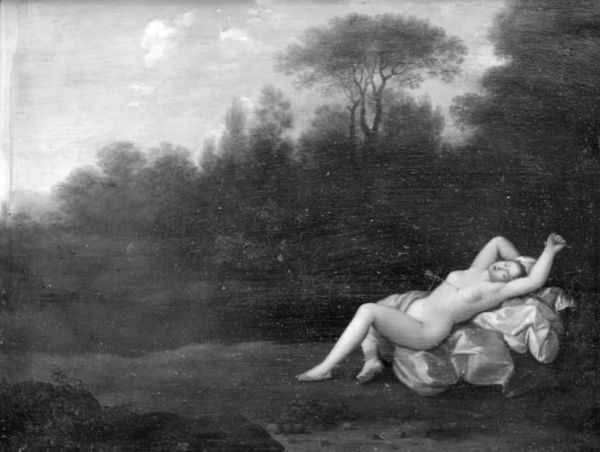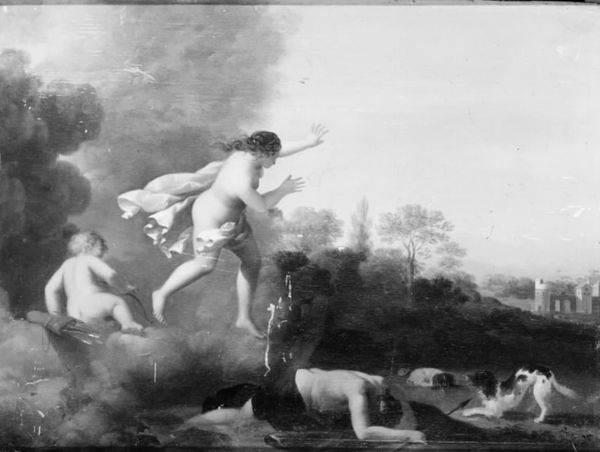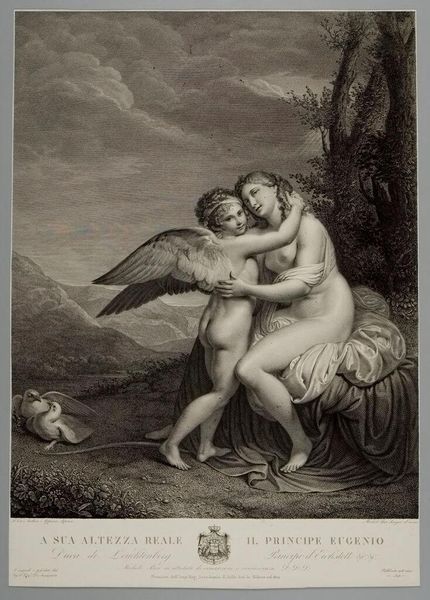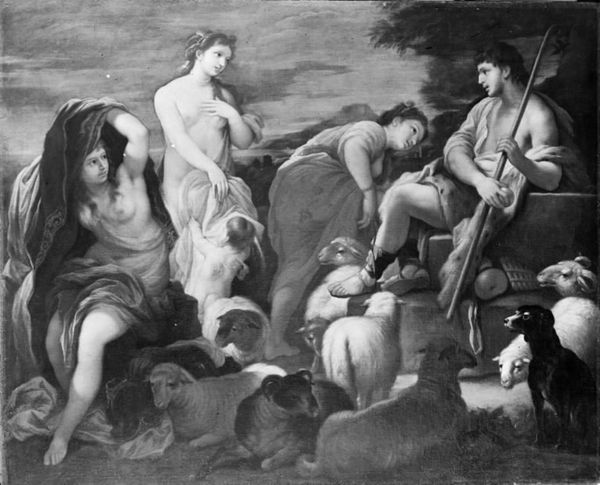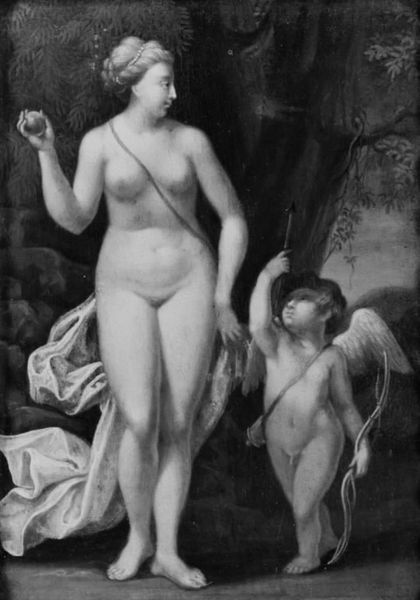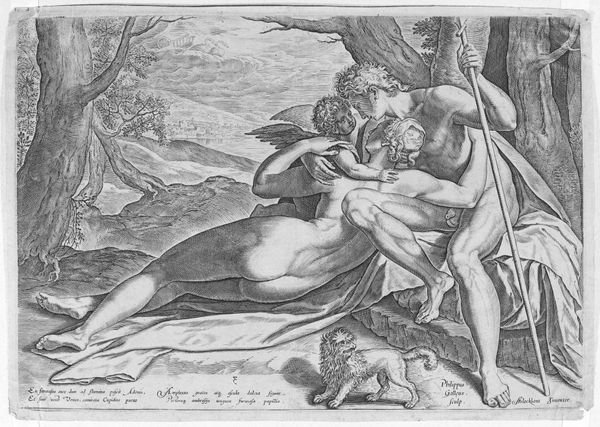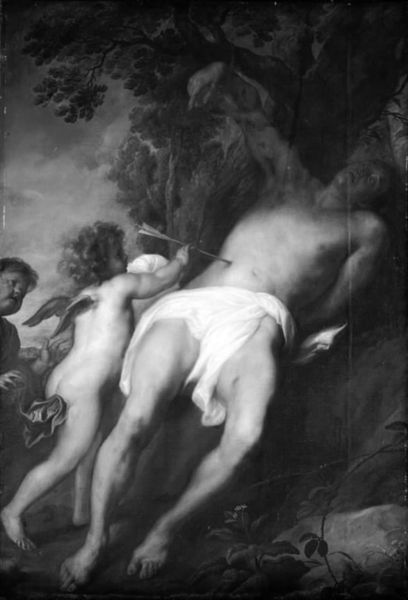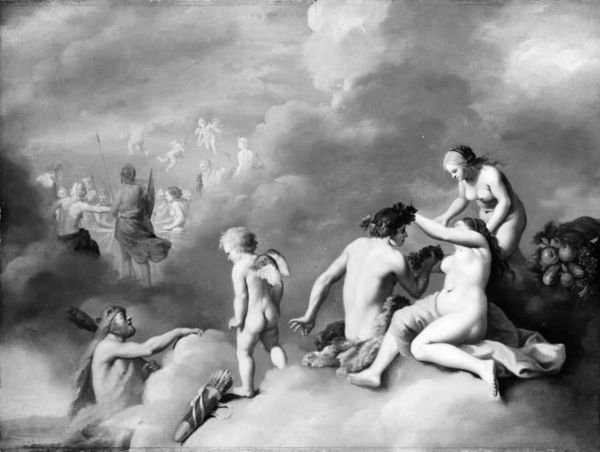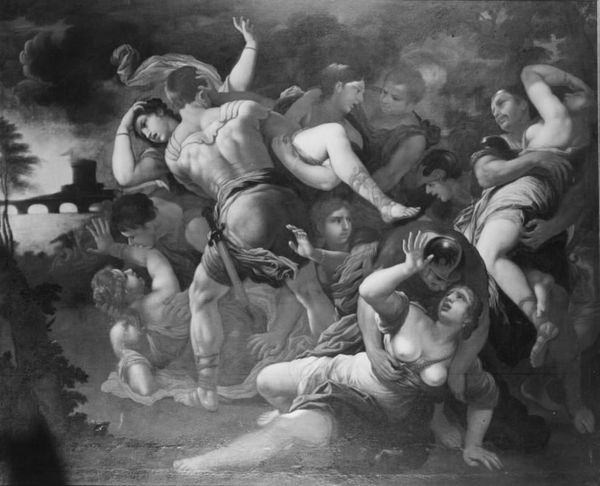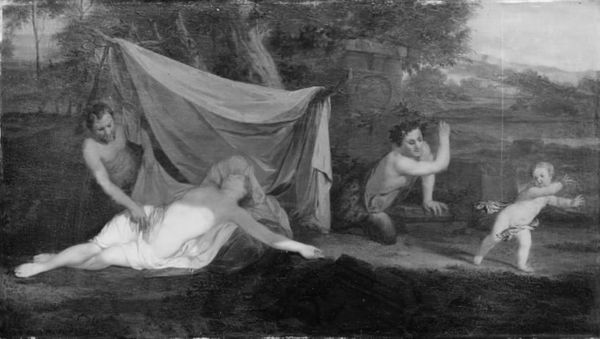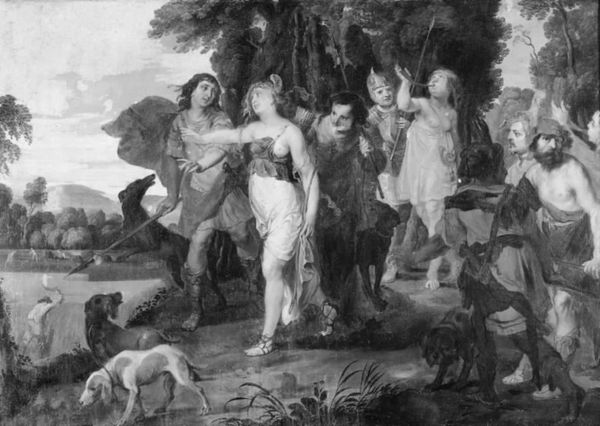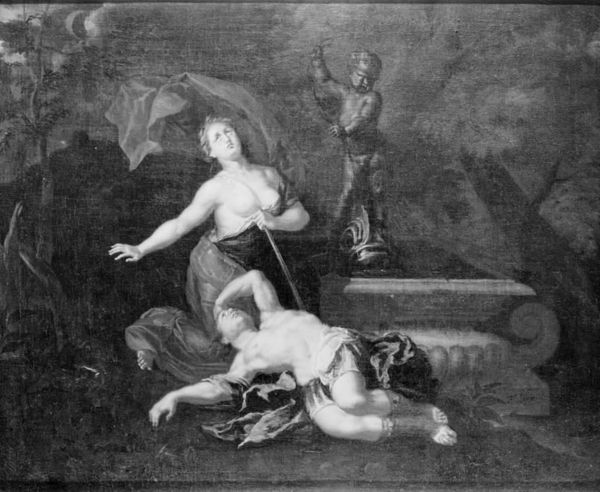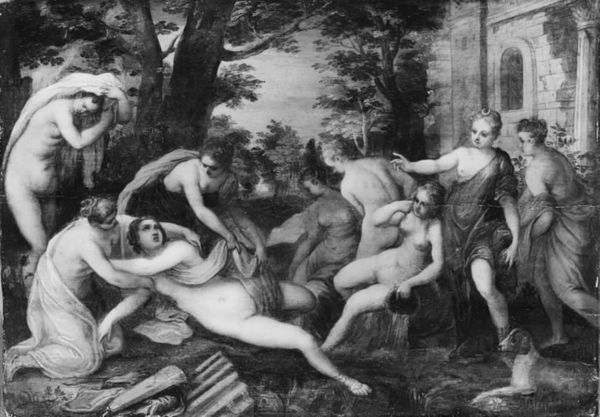
painting, oil-paint, canvas
#
baroque
#
painting
#
oil-paint
#
landscape
#
figuration
#
canvas
#
black and white
#
history-painting
#
charcoal
#
nude
Dimensions: 53.5 cm (height) x 65 cm (width) (Netto)
Curator: This painting is titled “The Origin of the Red Rose,” and it’s attributed to Carlo Maratti. It was created sometime between 1640 and 1713. You can find it here at the SMK, Statens Museum for Kunst. Editor: My initial feeling is one of unsettled beauty. There’s this pale, almost ethereal figure contrasted against a rather dark and almost rugged landscape. It’s quite striking, like a classical ideal jarringly inserted into a more chaotic reality. Curator: The clash you're picking up on is fascinating, isn't it? It speaks to the complex symbolic world Maratti constructs here. Note how the nude figure occupies a space teeming with roses. The roses here, are a signifier for love, perhaps a memory of an ancient goddess as Venus or Aphrodite whose transformation gave rise to red roses from white. It draws from Ovid's *Metamorphoses*, with a similar origin tale for anemones. Editor: I see it! This all points to how heavily classical antiquity influenced not just the style but the cultural and narrative touchstones during the Baroque period. Even the somewhat theatrical pose of the figure feels borrowed from ancient sculpture. Curator: Absolutely. And look closer at those roses, nestled beside the two doves. Dove-rose symbolism in Baroque iconography reinforced classical ideas that the seeds of beauty or even sacred love sprang up between deities, imbuing roses and even white flowers with romantic longing and perhaps sadness given their delicate ephemeral nature. Editor: I’m really struck by how this piece might have functioned within the social landscape of its time. I wonder where it might have been displayed and what kind of audience would have viewed it? Was it an aristocratic parlor, a public gallery? The piece’s accessibility would depend so much on this. The sensuality also raises questions about the expectations and norms for viewership back then. Curator: Those are insightful points. A work like this could very well have been situated in spaces designed to display power, taste, and, crucially, an understanding of classical myth and artistic conventions. A sophisticated visual language for a very specific elite. Editor: Considering those spaces, the painting's function transforms. It becomes more than a pretty scene; it’s a social statement, perhaps a conversation piece that affirms status and education. The roses, doves, and Venus, it becomes more about conveying wealth, and sophistication, as objects, not what they literally mean or illustrate in the artwork. Curator: Precisely. It serves as a window into how cultural memory and mythology are actively employed within societal structures, doesn't it? I’m taking away so much more about that context just thinking of it along those lines. Editor: Indeed. What I found thought-provoking in looking at it in all respects: considering visual power and the art history canon is always time well spent.
Comments
No comments
Be the first to comment and join the conversation on the ultimate creative platform.
